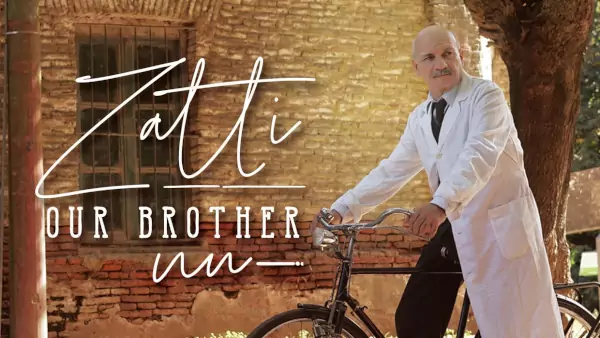December 14 - Saint John of the Cross in question today is that of the Carmelite Order. His name is Juan de Yepes Álvarez, born on June 24, 1542 in Frontiveros in Old Castile, a city located between Salamanca and Avila. Gonzalo de Yepes and Catalina Álvarez are his parents.
His father was a Knight of the Spanish court, but he was degraded and disinherited because of his misalliance with Catalina, a simple worker. The couple made a living from weaving, but the economic situation was difficult, especially since there was a famine. Gonzalo, Jean's father, died in 1545, greatly affecting family life. They moved to Arévalo, where Jean learned the trades of carpenter, tailor, sculptor and painter. As the family situation did not improve, Catalina decided, in order to survive, to move to Medina del Campo where she found work as a weaver. In a state of great poverty, they all settle together in the same house: Catalina, Francisco and his wife Ana, as well as Jean. It was there that Jean learned to read and write, at the College of Children of the Doctrine, and at that time he worked in the church to pay his school fees, as well as to help the clergy. Jean also took care of the poor in the hospital. He studied grammar and philosophy with the Jesuits. And at the age of twenty-one, he joined the Society of the Brothers of the Virgin Mary, in the convent of Medina, and took the name of John of Matthias. There he discovered the Rule of the Brothers and Sisters of Our Lady of Mount Carmel, the Institution of the first monks, the foundation of the spirituality of the Carmelite Order.
Within the Carmelite Order, John discovered the contemplative life and penance for conversion. After taking his vows, he was sent to Salamanca to study philosophy and theology, where in 1567 he met Teresa of Avila, reformer of the female branch of Carmel. This new reformed order was called the Discalced Carmel. Teresa of Avila was looking for someone to renovate the male branch, so she asked John of Matthias to help her. John did not hesitate and began to think about the reforms, so on November 28, 1568, he arrived in Duruelo, where Teresa of Avila had entrusted him with the foundation of a monastery for the new reformed order, this place was named Bethlehem of the Carmelites. From then on, John took the name of John of the Cross. He lived there with three confreres, dressed in uniforms carved by Teresa of Avila herself: a brown robe with a belt, the scapular of the order and a short white cloak. They promised to respect the Carmelite rule, a rule established in the time of Pope Innocent IV.
In short, it was not easy for John of the Cross to live the religious life of Carmel, especially during the Reformation. He always tried to be worthy of his promise. In 1570, he was in charge of the novices in Pastrana, then director of a college in Alcala de Henares in 1571. After that, for five years, he was the spiritual director of the Carmelites in Avila. There was a Carmelite chapter in Piacenza, Italy, to accuse John of the Cross of rebellion, because the Discalced Carmelites did not want to accept the reforms brought by the Discalced Carmelites. On December 2, 1577, John of the Cross was arrested and imprisoned in the Toledo monastery, home of the Discalced Carmelites, for nine months. At that time, he was beaten and insulted to stop the reforms, but he refused. And after August 15, 1578, he was released with the help of the Blessed Virgin Mary. He lived in Calvario, in the mountains of Sierra Morena in Andalusia, and often visited his confreres in Beas de Segura. In 1579, John of the Cross founded the Carmelite College in Baeza, and three years later he was elected superior of the Carmelite Martyrs of Granada, where he built a monastery. In 1585, he was Vicar General of Andalusia, and then superior of the House of Segovia in 1588. After the General Chapter of Madrid, in 1591, John was sent to Pamela. He fell ill on August 10, 1591 and was sent to Ubeda for treatment. After enduring the pain of illness and treatment, he died on Friday, December 13, 1591, at midnight. His body was then transported to Segovia. In 1675, Pope Clement X beatified him and on December 27, 1726, Pope Benedict XIII canonized him. Pope Pius XI publicly declared on August 24, 1926, that St. John of the Cross is Doctor of the Church.








